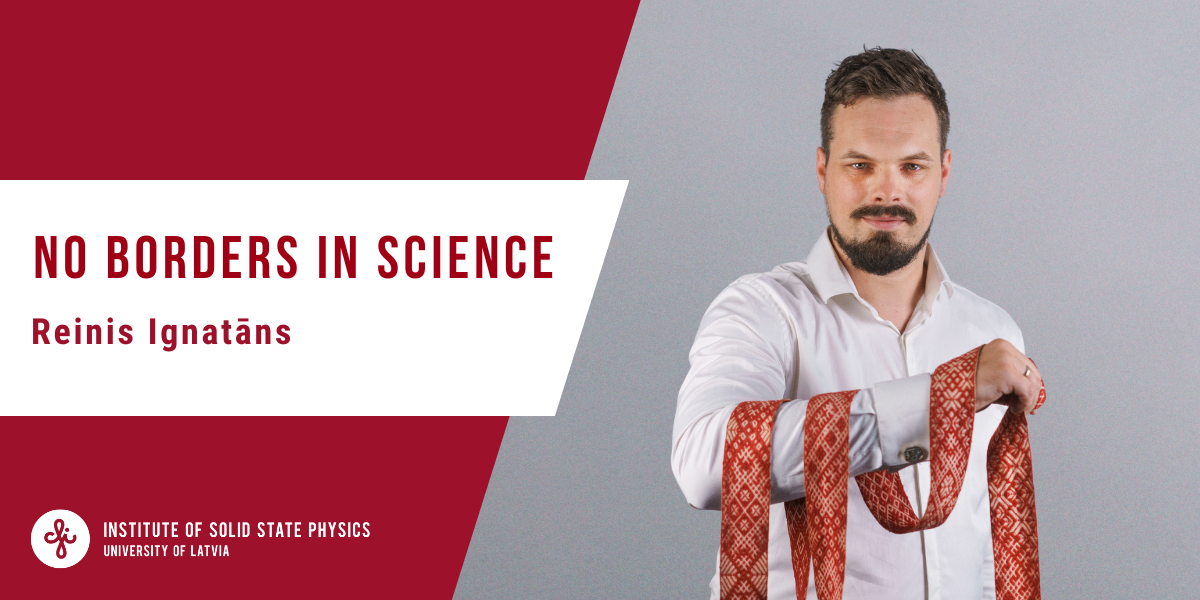
No Borders in Science is a series of interviews with Institute of Solid State Physics (ISSP UL) scientists and employees who are closely connected to the world outside of Latvia – by birth, attained education, or just their daily work. Through their stories we want to highlight the institute as a part of the global scientific network – a centre of excellence where collaboration isn’t limited by geography and the exchange of ideas, experiences, and efforts is placed at the forefront. This time, we speak with Reinis Ignatāns about the passion and know-how needed when working to see that which cannot be seen with the naked eye.
In your own words, what is your scientific specialty? Any topics of interest outside of it?
My speciality is performing challenging in situ experiments with electron beam and X-ray instruments. My whole PhD thesis was based on applying an electric field inside of a transmission electron microscope (TEM) on focused ion beam (FIB) prepared specimens. I also enjoy theoretical calculations and experiment modelling. Recently, I have dipped my toes into wave optics and associated measurements – me and a student under my guidance created a table-top laser interferometer instrument capable of measuring oscillations with a resolution of approximately 1 pm in amplitude. This is a distance hundred million times smaller than the typical thickness of a singular human hair.
How did your journey in science lead outside of Latvia?
I got my Master’s degree from the University of Latvia, but I did not continue studying here to attain my PhD – to be honest, I was a little tired of studies, so I took a two-year break. In the meantime, I was actually still working here at ISSP UL, where I got delved ever deeper into the world of electron microscopy. This really helped me land a PhD position in Switzerland at the EPFL (École polytechnique fédérale de Lausanne) where I could spend a lot of time doing challenging, but fun experiments on various electron microscopes.
And what led you back to the Institute of Solid State Physics?
When I was doing my PhD studies, I met Līga who is now my wife – I owe coming back to Latvia to her, actually. Additionally, my friend Dr. Krišjānis Šmits knew that I was finishing my PhD studies and will be coming back to Latvia, so he offered me a position in the ISSP UL Laboratory of Microscopy – a deal that I gladly accepted.
In three words, describe how everyday work at the ISSP UL makes you feel.
Morning, blink, evening. I’m joking, of course, but it’s to illustrate that working at ISSP UL gives you a lot of opportunities to chase your interests and explore new possibilities so the days end up more than eventful.
How does the ISSP UL assist scientists (proliferating participation in projects and events, supporting funding acquisition, endorsing growth opportunities, etc.)?
The institute often holds organized seminars on various activities, for example, how to prepare successful grant project proposals and submissions. This is something that might be actually underappreciated here in ISSP UL as – speaking from personal experience – there are not many institutions organizing such events and seeking to assist researchers to such an extent.
Currently, what is your next goal – in science, career-wise, or just in general?
I recently became a father; therefore, my mind is preoccupied with raising a tiny human being. I would be happy if she grows to be as curious as me (or even more) – that would be a good achievement.